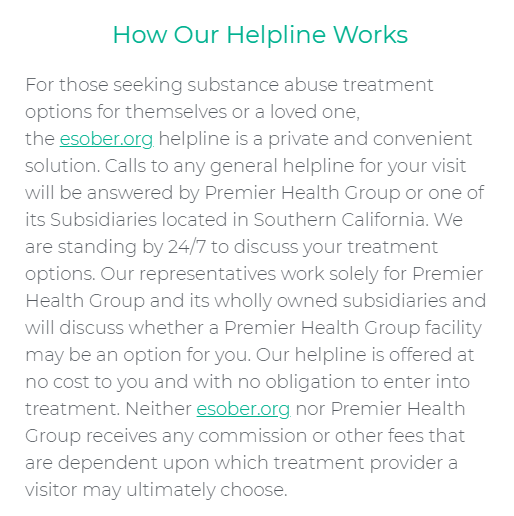Acid is an incredibly popular party drug that is usually consumed in festive events. Although it is not thought to be chemically addictive, regular users often develop a tolerance and psychological dependence on it due to the euphoric feelings it brings. For this reason, users are at risk of substance abuse, requiring them to seek addiction treatment.
When users undergo treatment programs, they address their dependence on the drug and other substances, offering them relief from co-existing mental health conditions. However, to ensure a successful recovery or to avoid addiction in the first place, it is crucial to understand the drug and how it affects the system.
What Is Acid?
Acid, which is the nickname for lysergic acid diethylamide or LSD, belongs to a class of drugs referred to as hallucinogens. They change a person’s perceptions of reality, distorting their sense of sight and touch for up to twelve hours. It is a colorless, odorless liquid that manufacturers drip onto absorbent, colorful paper squares known as blotter papers. Each blotter paper has several tabs, which are tinier squares. One tab is enough to experience a trip.
Sometimes, LSD is sold in other forms, like sugar cubes, capsules, and pills. LSD is always diluted with other products or chemicals in each form, and the potency often varies. There’s no concrete way to determine how much LSD a user is taking regardless of the form. Still, LSD is considered to be safe and non-toxic when taken at regular doses. Additionally, death from taking too much LSD is rare, and users are more likely to experience a distressing LSD trip than to get physically harmed by it.
How Long Does The High Last?
Everyone experiences hallucinations when they’re on an acid trip, but how long it lasts depends on many factors such as the dose taken, tolerance, other substances present in the system, and the mental health and state of the user. Acid trips usually start shortly after consumption and peak after two to four hours. At the 12-hour mark, the effects start to dip drastically, but they may not disappear until 24 hours later. Users begin to experience adverse effects between 12 to 24 hours, such as headaches, dizziness, nausea, imbalance, and difficulty concentrating.
Although the effects of acid disappear within a day, there are some instances of hallucinations among users years after their last exposure to the drug. Even though they may not be on acid at the time, they may feel like they are tripping and under its influence. This phenomenon is known as the hallucinogen persisting perception disorder.
How Long Does Acid Stay in the System?
LSD has a shorter half-life than other substances at three to four hours, which means it takes that amount of time for the body’s concentration of the drug to decrease by 50 percent. It can also take the body anywhere between 15 and 28 hours to process and eliminate the substance.
Still, that doesn’t mean that there aren’t any traces of it in your body after this period. LSD is detectable in urine for two to five days after ingestion, which is longer than its half-life. However, standard drug tests do not screen LSD. Therefore, specialized lab tests will have to be used to detect LSD metabolites.
How long LSD stays in your blood depends on how much the user has taken. If they took 100 micrograms of LSD, then it can be detected in their blood for up to eight hours. If they took 200 micrograms, then a blood test can detect its presence for up to 16 hours. This window is still shorter than urine testing due to LSD’s short half-life. Standard blood tests also do not screen for LSD, which means specialized ones are required.
As with other substances, hair tests have a much longer detection time for LSD. It can identify LSD that was consumed within the past 90 days. It can even be used to estimate when the user took the drug by analyzing the hair’s growth rate and the position of the drug traces in the hair shaft. Regardless, hair tests are notoriously inaccurate, as a peer-reviewed paper found that they detected LSD only two out of 17 times, resulting in an accuracy rate of 12 percent. Pubic hair is even less reliable since it is always contaminated by other fluids, like urine.
Lastly, saliva lab tests are usually used to detect more commonly taken drugs. Like other tests, a specialized swab test is needed to identify LSD, which means saliva drug screens are almost never used. However, if it is used, it can detect the drug if it was consumed within eight to 16 hours, although it is even more unreliable than hair testing.
Is LSD Addictive?
LSD by itself is not addictive since most addictive drugs encourage drug-seeking behaviors, but LSD does not. It also does not lead to physical cravings for more of the substance. Still, when frequent users develop a tolerance to acid, which means that they need to increase their dose to achieve tangible hallucinatory effects, it may result in psychological addiction. This is because the drug does not cause chemical dependence, but users may believe they need it. Additionally, those who enjoy the hallucinations caused by acid may find themselves wanting to use the drug more frequently to experience these more.
It’s important to note that many acid users also use other substances, such as alcohol and marijuana. Using multiple substances at one time can increase a person’s tendency to abuse substances, requiring addiction treatment.
What Are Its Side Effects?
LSD influences the receptors in the brain that are used for regulating serotonin, a neurotransmitter that controls various functions such as the behavioral, regulatory, and perceptual systems. These include motor control, sensory perception, hunger, body temperature, mood, and sexual behavior. When these systems are influenced by LSD, the user begins to experience hallucinations. They see images, hear sounds, and feel sensations that appear to be genuine but aren’t actually there.

The hallucinations a person experiences include vivid, sometimes noisy colors, unusual patterns, changing shapes, and trails behind objects. The drug heightens the user’s senses, which means that everything in their environment is magnified and emphasized. It also amplifies the user’s mood, which means that they’ll feel even happier and more content if they take the drug while feeling cheerful. Similarly, if one takes the drug while feeling upset, they’ll become more frustrated during the trip.
Sometimes, these hallucinations come with rapid and intense mood changes. For this reason, an LSD trip can start incredibly pleasant and euphoric and quickly veer into terrifying and unpleasant.
There are also physical side effects a user may experience. These involve a faster heart rate, nausea, dry mouth, shakiness, insomnia, increased blood pressure, and higher body temperature. However, these should all go away within 24 hours.
Conclusion
Acid is generally a safe and non-toxic drug that typically does not lead to addiction. However, the intense feelings and sensory hallucinations it produces can result in psychological dependence. By understanding the substance and how it works, you can protect yourself from the negative effects of the drug and seek addiction treatment if you have developed a dependence on it.
Sources:




